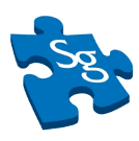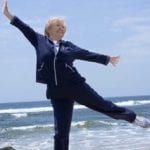A Doctor of Chiropractic has spent four years at an accredited chiropractic institution, receiving more than 4,200 hours of specialized clinical training. (OCA website, 2013) Although trained in general medicine, chiropractors are considered clinical specialists in spinal pain and extremity injuries due to extensive training in musculoskeletal anatomy, biomechanics and the diagnosis and management of musculoskeletal disorders. The chiropractic curriculum includes studies in human sciences, diganosis and clinical management including anatomy, physiology, radiology, pathology, biomechanics, diagnosis, nutritional sciences, spinal and extremity adjustive techniques, rehabilitation, physiotherapy and other treatment modalities including acupuncture and myofascial techniques. As primary care providers, chiropractors can diagnosis and develop a comprehensive treatment/management plan, recommend and deliver rehabilitation and other non-invasive therapies including acupuncture and physiotherapeutics, and provide nutritional, dietary and lifestyle counselling. Chiropractors are one of only five classes of health care professionals in Ontario that are able to use the title Doctor, with its accompanying rights and obligations.
Dr. Connie D’Astolfo is a chiropractor practicing in Vaughan, Ontario, Canada and graduated in 2001 from National University of Health Sciences, Chicago Illinois. Dr. D’Astolfo has furthered her education in the areas of health policy, research and management as has received a post graduate diploma in Health Management from the University of Toronto, Faculty of Medicine. She is currently a PhD candidate at York University, Faculty of Health. Dr. D’Astolfo has served the Vaughan community since 2001 and has become recognized for complex spinal injuries and chronic pain conditions. Dr. D’Astolfo is an expert in her field and has been diagnosing and managing spine disorders and back injuries for over a decade.
Click here to see SPINEgroup® brochure.
What is Physiotherapy?
The Ontario Physiotherapy Association defines physiotherapy as a “rehabilitation profession with a presence in all health care delivery streams in Ontario: hospitals, long-term care facilities, home care, community-based clinics, private practice clinics and primary care networks”. Physiotherapists are regulated in Ontario under the Regulated Health Professions Act (RHPA).
In Ontario, physiotherapists are licensed to practice by the College of Physiotherapists of Ontario. There are approximately 7,000 licensed physiotherapists in the Province.
Physiotherapy is a drug-free health care practice. Physiotherapists work in partnership with individuals of all ages to break down the barriers to physical function whether that means working with patients pre and post surgery, helping people come back from illness and chronic disease, injury, industrial and motor vehicle accidents and age related conditions. Physiotherapists also play an important role in health promotion and disease prevention. Physiotherapy is used to treat those who suffer from pain whether in the back or neck, or joint pain such as hips, knees, ankles, wrists, elbows or shoulders.
Physiotherapy has proven to be effective in the “treatment and management of arthritis, diabetes, stroke and traumatic brain injury, spinal cord injury and a range of respiratory conditions.” (OPA website, 2013)
Based in Vaughan, Ontario, SPINEgroup®’s clinical programs utilize physiotherapists to facilitate those afflicted with various musculoskeletal and chronic diseases with various tools and techniques to optimize function to achieve pain free living. SPINEgroup® now provides OHIP physiotherapy for the Vaughan, Woodbridge, Thornhill, North York, Richmond hill Toronto and GTA communities, for Central LHIN.
What is Massage Therapy (RMT)?
Massage Therapists assess and treat pain of the soft tissue and joints of the body, mostly by hands-on manipulation. Assessment and treatment can include orthopaedic and neurological testing, soft tissue manipulation (Swedish massage is the most commonly used technique), hydrotherapy, remedial exercise programmes and patient education.
Training to become a Registered Massage Therapist in Ontario consists of a two to three year diploma programme from one of a number of recognized Massage Therapy schools in the province.
The College of Massage Therapists of Ontario defines massage therapy as ” hands-on manipulation of the soft tissues of the body, specifically, the muscles, connective tissue, tendons, ligaments and joints for the purpose of optimizing health”.
Massage therapy treatment has a therapeutic effect on the body and optimizes health and well-being by acting on the muscular, nervous and circulatory systems. Physical function can be developed, maintained and improved; and physical dysfunction and pain and the effects of stress can be relieved or prevented through the use of Massage Therapy.” (CMTO website, 2013)
What is Psychotherapy & Cognitive Behavioural Therapy?
In short, CBT is a form of psychotherapy treatment which involves a therapist assisting a client to identify and solve problems by focusing on their thinking, behaviour and emotions. The overall theory is that your beliefs influence your emotions and your behaviour, therefore by identifying and addressing problematic thoughts you can change your behaviour and improve your way of life.
How does it work?
Although there are different CBT approaches, each method focuses on identifying the client’s underlying thoughts, beliefs or assumptions which affects their life. One approach, developed by psychologist Albert Ellis, uses an ABC model for change. The ABC Model asks you to record a sequence of events in terms of:
- A – Activating Event (also sometimes described as a ‘Trigger’)
- Write down the event or situation that triggered your thoughts and feelings.
- B – Beliefs (for example, the thoughts that occur to you when the Activating Event happens)
- Write down the thoughts that went through your head when the activating event occurred (or after it)
- C – Consequences – how you feel and behave when you have those beliefs.
- Consequences may be divided into two parts: 1) Actions – What did you do? 2) Emotions – What did you feel?
Below is an ABC example of how a single activating event can result in different beliefs and behaviours.
| A – Constant back pain. | A – Constant back pain. | A – Constant back pain. |
|---|---|---|
| B – My back is broken and it cannot be fixed. | B – If I do anything, it will make my back worse. | B – I can still do some things but not everything. |
| C – Feeling = Depressed. Behaviour = Stay in bed all day and avoid everyone | C -Feeling = Fear and Vulnerability. Behaviour = Avoid all previous enjoyed activities. | C -Feeling = Hopeful. Behaviour = Continue with previous enjoyed activities that are not extremely physical. (least amount of negative consequences) |
With the assistance of a therapist, you can examine the ABCs of any given situation in which change is desired. For instance, you are directed in scrutinizing whether your beliefs are justified, based on erroneous assumptions or thinking errors. It is important to clarify whether the situation and the evidence justifies your beliefs. After all, the goal of CBT is to help you react and behave in a more constructive way.







